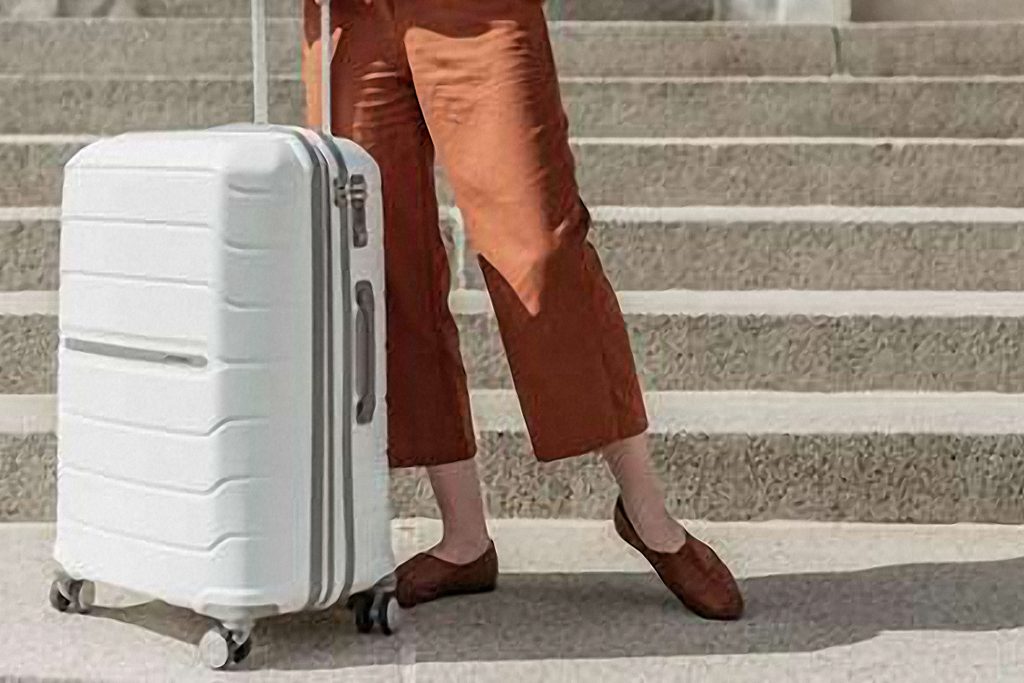Skift Take
By itself, the coronavirus scare needn't be like kryptonite to Samsonite, which has high gross margins. But the long-term double whammy of supply shocks (due to factory closings) and demand shocks (due to travelers pulling back on spending) may reduce the company's ability to pay interest on its heavy debts.
Samsonite entered 2020 with a lot of baggage. The world’s largest maker of branded luggage had loaded up on debt, partly to afford its $1.8 billion acquisition of Tumi in 2016. But reduced global growth this year may lead to lower earnings and more difficulty in servicing that debt.
S&P Global earlier in March lowered its outlook on the company into so-called junk territory. The ratings service put the Massachusetts-based, Hong Kong-listed group on “CreditWatch with negative implications.”
Samsonite’s debt was roughly three times its revenue, as of its September 30, 2019, financial report. That debt load provided the company “with a limited cushion to absorb any potential performance declines stemming from the virus’ spread,” S&P Global said.
Get the Latest on Coronavirus and the Travel Industry on Skift’s Liveblog
History is a guide. Samsonite’s revenue during the 2008–2009 recession decreased about 18 percent for the year 2009, noted a Moody’s report.
It’s not all bad news, though. S&P and Moody’s both expect the company to maintain a significant cash balance in the near term.
Its sales channels are also more cost-effective than those of many smaller luggage makers. Samsonite has 1,300 company-owned stores, helping it to maintain gross margins of around 60 percent last year.
Many Headwinds
Samsonite in 2018 switched CEOs after investors raised concerns about “accounting issues” related to how the company had valued Tumi. The turmoil absorbed management’s attention for a while.
The luggage company last year fell afoul of the trade spat between the U.S. and China. It warned vendors that prices might rise about 10 percent because of duties the Trump Administration imposed on imports from China.
The tariff spat hurt performance. Samsonite during the first half of 2019 posted net sales of $1.75 billion, down 5 percent from the same period a year earlier. Operating profit dropped 38 percent to $124 million.
Now coronavirus is disrupting Samsonite’s supply chain, as many factories in China and Southeast Asia suspended work in February.
The coronavirus scare is probably upsetting sales too. Asia accounts for approximately a third of Samsonite’s business. The company derived about 60 percent of its revenues from sales of luggage to travelers. It also sells accessories like athletic wear and backpacks. About 8 percent of its total revenue came from China in 2018.
Samsonite has faced pressure from new entrants, such as direct-to-consumer brands like Away, which has raised $156 million in total equity funding since its founding in 2016.
One way to compete is through acquisitions. Yet Samsonite’s acquisition of Tumi was pricey, valuing Tumi at 14 times earnings before interest, tax, depreciation, and amortization. If the global economy gets choppy, Samsonite will need to delay further acquisitions and focus instead on servicing its debt and minding its stores.
Samsonite has agreed with its lenders and debt holders not to borrow more than 5.25 times as much as its adjusted earnings before interest, taxes, and depreciation in the previous year. But a revenue shortfall this year makes it a non-zero possibility it might break those loan covenants and have to renegotiate loans on tougher terms.
The Daily Newsletter
Our daily coverage of the global travel industry. Written by editors and analysts from across Skift’s brands.
Have a confidential tip for Skift? Get in touch
Tags: coronavirus, debt, luggage
Photo credit: A close-up photo of Samsonite Freeform hard-side suitcase. Samsonite's debt load provides the luggage maker with a limited cushion to absorb any potential performance declines due to coronavirus, ratings agencies said. Samsonite
